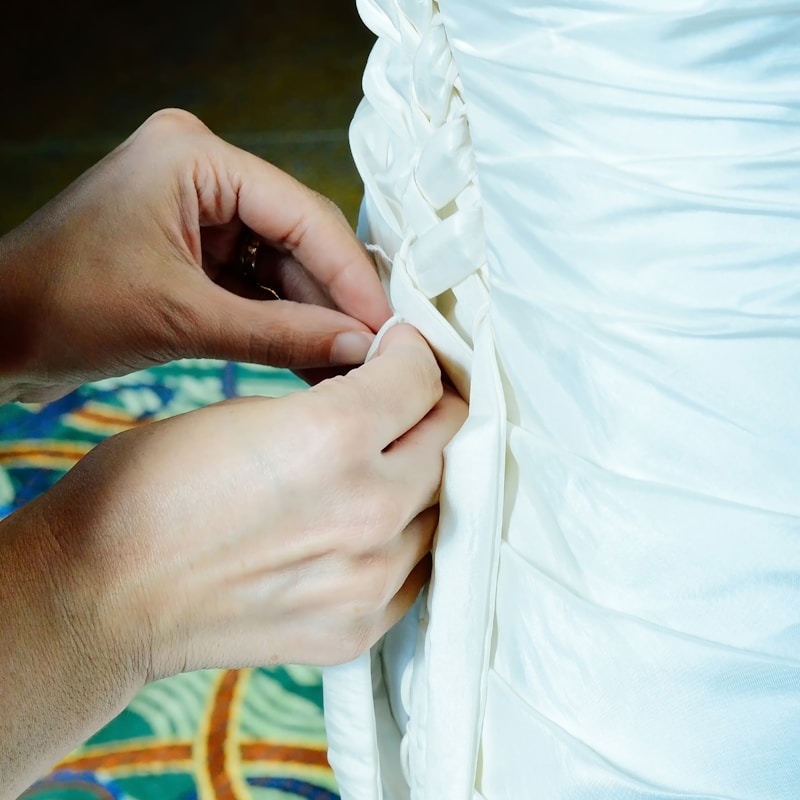Understanding Sheerness: The Role of Fabric Thickness in Wedding Dresses
Understanding Sheerness: The Role of Fabric Thickness in Wedding Dresses
Introduction to Sheerness in Wedding Dresses
Choosing the perfect wedding dress is a significant part of any bride's journey. One of the critical aspects that determine the overall look and feel of a wedding dress is fabric thickness, which directly influences sheerness. In this article, we will explore the concept of sheerness, the role of fabric thickness, and how it impacts the style, design, and comfort of wedding gowns. We will also discuss trending materials, tips for choosing the right dress, and answer popular questions regarding wedding dress fabrics.
What is Sheerness?
Sheerness refers to the transparency level of a fabric. In the world of wedding dresses, sheerness can evoke a sense of elegance, allure, and romance. It can be an essential feature that highlights a bride's silhouette and adds dimension to the overall design. Various factors contribute to the sheerness of a material, but the most significant of these is fabric thickness.
The Importance of Fabric Thickness
Fabric thickness plays a pivotal role in determining the sheerness of wedding dresses. Thicker fabrics tend to provide more coverage and opacity, while thinner fabrics are more transparent. Brides can leverage this knowledge to create the desired effect in their wedding dress. Here are some common fabrics used in wedding dresses and how their thickness affects sheerness:
| Fabric Type | Thickness | Sheerness Level |
| Satin | Thick | Low Sheerness |
| Lace | Medium | Medium Sheerness |
| Tulle | Thin | High Sheerness |
| Chiffon | Thin | High Sheerness |
| Organza | Medium | Medium to High Sheerness |
Popular Fabric Choices for Wedding Dresses
When selecting a wedding dress, understanding the various fabrics and their properties can greatly enhance your shopping experience. Here are some of the most popular fabric choices:
- Satin: Known for its luxurious feel and glossy finish, satin provides a structured look, ideal for ball gowns and A-line dresses.
- Lace: Lace is synonymous with romance. Available in various styles, lace can range from delicate to bold patterns. Its medium thickness offers a beautiful balance of coverage and sheerness.
- Tulle: Often used for skirts and overlays, tulle is lightweight and airy, making it ideal for ethereal looks.
- Chiffon: A soft, flowing fabric known for its sheerness, chiffon is perfect for draped designs and layered gowns.
- Organza: Similar to tulle but with a slightly crisper quality, organza adds volume and drama to wedding dresses.
How to Choose the Right Fabric Thickness
Choosing the right fabric thickness for your wedding dress depends on several factors, including the wedding theme, season, and personal style preferences. Here are some tips to consider:
- Body Shape: Certain fabrics can flatter different body shapes. For instance, thicker fabrics may offer support for curvy brides, while lighter fabrics can enhance a slim silhouette.
- Wedding Theme: Consider the formality of your wedding. For a traditional church wedding, thicker fabrics may be more appropriate, whereas a beach wedding can warrant lighter materials.
- Season: In warmer months, opt for breathable fabrics like chiffon and tulle, while heavier materials like satin are better suited for colder seasons.
- Comfort: Always prioritize comfort. Fabrics that are too heavy or constricting can hinder your movement and enjoyment on your special day.
Exploring Sheerness Styles in Wedding Dresses
Brides often desire a balance between elegance and sensuality in their wedding attire. Understanding how sheerness can be incorporated into various styles can help you make informed decisions. Here are some trendy approaches to sheerness in wedding dress designs:
- Sheer Sleeves: Sleeves made of sheer fabrics add a delicate touch while highlighting the arms.
- Backless Designs: Sheer panels in the back can create a stunning visual without sacrificing modesty.
- Layered Overlays: Utilizing sheer overlays can add depth and dimension to skirts, creating intriguing silhouettes.
- Illusion Necklines: These design techniques use sheer panels to create the illusion of a traditional neckline while offering modern flair.

Addressing Common Questions About Fabric Thickness and Sheerness
Many brides have questions about the relationship between fabric thickness and sheerness when selecting their wedding gowns. Here are answers to some frequently asked questions:
1. How can I tell if a fabric is too sheer?
To assess sheerness, hold the fabric against a bright light. If you can see your hand clearly through it, the fabric is likely too sheer for full coverage.
2. Can I add lining to a sheer dress?
Yes, many brides choose to add lining to sheer dresses to provide additional coverage while maintaining the desired aesthetics.
3. Is sheer fabric appropriate for a church wedding?
Sheer fabrics can be appropriate for church weddings if styled properly. Consider designs with sheer panels combined with more opaque materials for a balanced look.
Conclusion: Embracing Sheerness in Wedding Dresses
Understanding the role of fabric thickness in determining sheerness is crucial for every bride-to-be. By considering your body shape, wedding theme, and personal style, you can choose a wedding gown that beautifully incorporates the right level of sheerness. By also exploring various fabrics, from luxurious satin to ethereal chiffon, brides can curate their dream dress that encapsulates their vision for their special day.
Remember, whether you prefer a high-sheer design for a daring look or a more structured appearance, the right fabric and style will enhance your beauty and confidence on your wedding day. Don't hesitate to seek the guidance of experienced bridal consultants, as they can offer invaluable insights tailored to your unique tastes and preferences.
